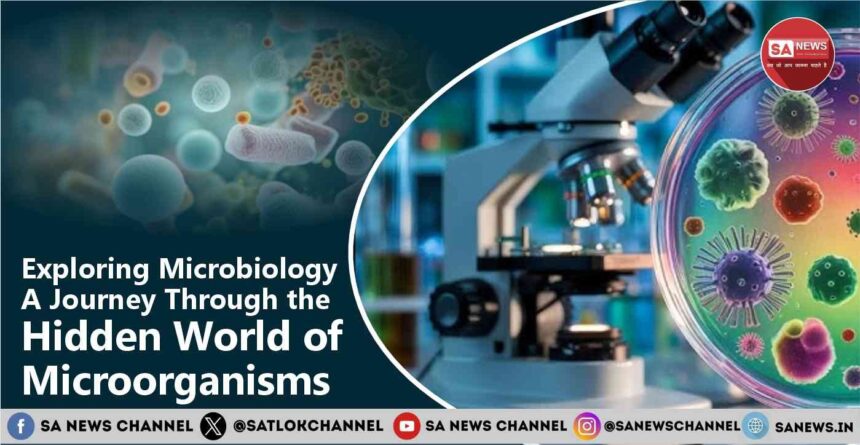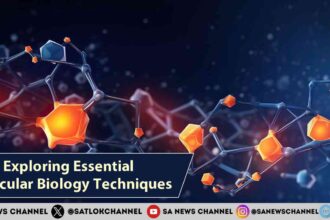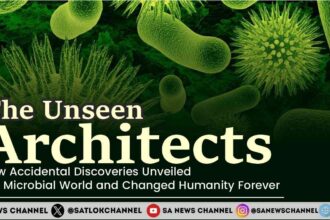Microbiology is the branch of biology that deals with organisms too small to be seen with the naked eye — microorganisms. These include bacteria, archaea, algae, fungi, protozoa, and contagions. Although unnoticeable to us, microbes profoundly impact every aspect of life on Earth. From shaping our earth’s atmosphere to fueling global ecosystems and driving inventions in drug and technology, microbiology is a foundation of ultramodern wisdom.
This blog delves into the fascinating history of microbiology, the revolutionary debates girding the origins of life, the connection between microbes and complaint, and the extraordinary advancements made in the 20th century. We’ll also explore the major types of microorganisms, each playing unique places in the biosphere.
Literal Background
The history of microbiology is a testament to mortal curiosity and scientific progress. Although humans have intentionally interacted with microbes for glories — through processes like turmoil and the spread of complaint — it was n’t until the 17th century that their actuality was verified.
The Birth of Microbiology
Antonie van Leeuwenhoek, a Dutch tradesman with a passion for lens- timber, is considered the “ father of microbiology. ” In the 1670s, using handcrafted microscopes, he was the first to observe and describe “ animalcules, ” now known as microorganisms, in water driblets and dental shrine. His scrupulous compliances laid the root for unborn disquisition.
latterly, in the 19th century, Louis Pasteur and Robert Koch revolutionized microbiology with their groundbreaking exploration. Pasteur rebutted myths like robotic generation and developed pasteurization, while Koch established styles for relating specific microbes as the causes of complaint, now known as Koch’s presuppositions.
The invention and refinement of microscopes — especially electron microscopes further opened up the microbial world, allowing scientists to observe contagions and complex cell structures.
Robotic Generation Versus Biotic Generation of Life
For centuries, people believed in robotic generation — the idea that life could arise from non-living matter. Common compliances, like bees appearing on rotting meat, sounded to support this notion.
Disconfirming robotic Generation
In the 17th century, Italian scientist Francesco Redi challenged this idea. He showed that bees only appeared on meat when canvases could lay eggs on it, suggesting that life comes from life.
The final blow came in the 19th century when Louis Pasteur conducted his notorious swan- neck beaker trial. He demonstrated that sterile broth remained free of microbial growth when defended from airborne pollutants. When exposed, microorganisms fleetly multiplied.
Also Read: Microorganisms in the Built Environment: Impacts on Human Health
Pasteur’s trials proved that biotic generation — life arising from being life was the true origin of microbes in these settings.
This finding laid the foundation for ultramodern origin proposition and sterilization practices, transubstantiating wisdom and drug ever.
Microbes and Disease
Microbiology’s most profound impact may be in the field of drug. Before the late 1800s, complaint was frequently attributed to steams( bad air), godly discipline, or imbalance of fleshly fluids.
The origin proposition of Disease
The origin proposition proposed that specific microorganisms beget specific conditions. Pasteur’s work on silkworm conditions and wine corruption supported this idea. Robert Koch’s exploration handed farther substantiation by segregating the bacteria that beget anthrax, tuberculosis, and cholera.
Koch developed a set of criteria — Koch’s presuppositions — to prove a microbe’s link to a complaint
- The microorganism must be set up in all organisms suffering from the complaint.
- It must be insulated and grown in pure culture.
- The dressed microbe must beget complaint when introduced into a healthy organism.
- It must be re-isolated and linked as the same microbe.
These principles revolutionized drug, leading to bettered diagnostics, hygiene, and public health measures.
Vaccines and Antibiotics
The 20th century saw major improvements, starting with vaccines. Edward Jenner’s smallpox vaccine( 1796) was a precursor to a long line of successful immunizations, from polio to measles.
In 1928, Alexander Fleming discovered penicillin, the first true antibiotic. This discovery steered in the antibiotic period, saving millions of lives. still, antibiotic resistance remains a growing concern moment, emphasizing the need for responsible use and continued exploration.
Progress in the 20th Century
The 20th century was a golden age for microbiology, thanks to advances in molecular biology, genetics, and biotechnology.
DNA and the inheritable law
One of the most transformative discoveries was the structure of DNA by James Watson and Francis Crick in 1953. Understanding DNA enabled scientists to explore how inheritable information is stored, replicated, and transmitted. This was vital for studying microbes, numerous of which have small, fleetly evolving genomes.
The Rise of Molecular Microbiology
Researchers developed tools like polymerase chain response( PCR), gene sequencing, and recombinant DNA technology. These enabled scientists to manipulate microbial genomes, produce genetically modified organisms, and understand microbial ecology at the molecular position.
Biotechnology and Microbial Applications
Today, microbes are necessary in biotechnology. They produce insulin, enzymes, biofuels, and indeed biodegradable plastics. CRISPR- Cas9, a gene- editing technology deduced from bacterial defense mechanisms, is revolutionizing genetics and drug.
Environmental microbiology has also expanded, with microbes used to clean oil painting tumbles, degrade waste, and fix atmospheric nitrogen in husbandry.
Types of Microorganisms
Microorganisms are incredibly different. While they may be bitsy, their bracket, structure, and function vary extensively. Let’s explore the major types
Bacteria( Eubacteria and Archaea)
Bacteria are single- celled prokaryotes — organisms without a nexus. They come in colorful shapes spheres( cocci), rods( bacilli), spirals( spirilla), and more.
Eubacteria
Eubacteria, or “ true bacteria, ” are the most common. They inhabit soil, water, and our bodies. Some are salutary, like Lactobacillus in yogurt, while others beget complaint, like Streptococcus or Escherichia coli.
Eubacteria can be:
- Autotrophic, producing their own food( e.g., cyanobacteria)
- Heterotrophic, counting on external food sources
Archaea
Archaea are genetically distinct from eubacteria. They frequently live in extreme surroundings hot springs, swab lakes, or acidic waters. Some can indeed survive in the absence of oxygen.
Their unique enzymes are precious in biotechnology, particularly in PCR responses, which use heat-stable DNA polymerases deduced from archaea.
Algae
Algae are photosynthetic organisms set up in submarine surroundings. Though frequently multicellular( like seaweed), numerous algae are bitsy and unicellular.
crucial Features:
- Contain chlorophyll and other colors for photosynthesis
- Do n’t have true roots, stems, or leaves like shops
- Produce a large portion of Earth’s oxygen
Microalgae, like Chlorella and Spirulina, are gaining fashionability as nutritive supplements and biofuel sources.
Algal blooms, still, can be dangerous, producing poisons and depleting oxygen in water bodies known as eutrophication.
Fungi
Fungi are a different group that includes provocations, molds, and mushrooms. Unlike shops, fungi do n’t photosynthesize. They absorb nutrients from their terrain by breaking down organic material.
Types of Fungi
- provocations are unicellular and used in baking and brewing( Saccharomyces cerevisiae).
- Molds are multicellular fibers, frequently seen on decaying food.
- Mushrooms are the fruiting bodies of some fungi.
Fungi play vital places in corruption, nutrient recycling, and symbiotic connections( like mycorrhizae with factory roots).
Fungi in drug and Assiduity
- Penicillin and other antibiotics are fungal products.
- Fungi are also used to produce crapola, soy sauce, and enzymes.
- still, some fungi are pathogens, causing conditions like athlete’s bottom, candidiasis, and indeed systemic infections in immunocompromised individualities.
Conclusion
Microbiology is a vast and dynamic field that touches every aspect of life. From the major challenges to robotic generation to the ultramodern sensations of DNA editing, our understanding of microorganisms continues to expand. Bacteria, archaea, algae, and fungi are just the morning — each type plays pivotal places in ecosystems, health, and technology.
As we move into an period of rapid-fire scientific advancement, microbiology will be at the heart of inventions in drug, husbandry, and environmental sustainability. Whether you’re a pupil, scientist, or simply curious, exploring the microbial world is a trip worth taking — one that reveals the inconceivable power of life at the bitsy scale.
Microbiology reveals the physical structure and behavior of microscopic life, spiritual knowledge reveals the root cause of suffering and disease — our ignorance of the Supreme God. Maharaj Ji explains through the holy scriptures that many diseases are karmic outcomes, and complete salvation can only be attained through true devotion to Kabir Sahib Ji.
Just as microorganisms influence life invisibly, so does God’s power sustain and control the universe subtly. By following the path shown in the holy scriptures (like the Sukshm Ved), and accepting a true Guru, one can attain both physical well-being and eternal liberation beyond this material creation.









